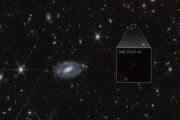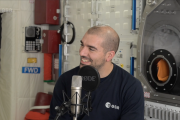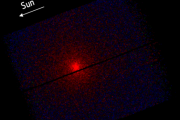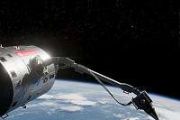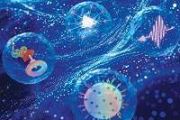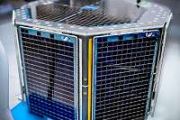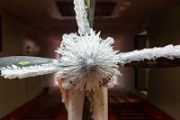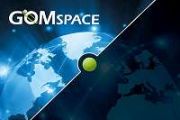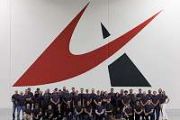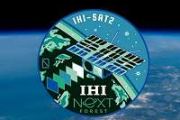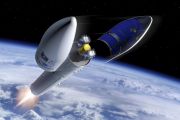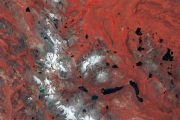
Copernical Team
SatixFy Showcases Next-Gen Space Chip Technology
 SatixFy Communications Ltd. (NYSE AMERICAN: SATX), a pioneering force in satellite communication technologies, has moved its Prime 2.0 Digital Beamformer (DBF) chip and Sx4000 Digital Payload On-Board-Processing Chip for Digital Satellite Payload into the advanced customer sampling phase. These innovations are now being evaluated by manufacturers of satellites in both low earth orbit (LEO) and g
SatixFy Communications Ltd. (NYSE AMERICAN: SATX), a pioneering force in satellite communication technologies, has moved its Prime 2.0 Digital Beamformer (DBF) chip and Sx4000 Digital Payload On-Board-Processing Chip for Digital Satellite Payload into the advanced customer sampling phase. These innovations are now being evaluated by manufacturers of satellites in both low earth orbit (LEO) and g KULR Technology Secures Key Contract with Nanoracks to Boost Space Battery Innovation
 KULR Technology Group, Inc. (NYSE American: KULR), a leader in lithium-ion battery safety and thermal management, has been awarded a significant contract by Nanoracks, a Voyager Space Exploration Segment entity. The deal, valued at over $865,000, signifies a major step forward in the development of advanced space batteries, set to enhance Voyager's CubeSat operations. The contract, culminating i
KULR Technology Group, Inc. (NYSE American: KULR), a leader in lithium-ion battery safety and thermal management, has been awarded a significant contract by Nanoracks, a Voyager Space Exploration Segment entity. The deal, valued at over $865,000, signifies a major step forward in the development of advanced space batteries, set to enhance Voyager's CubeSat operations. The contract, culminating i NASA Announces Innovative Teams in Wildfire and Climate Change Tech Challenge
 NASA has announced the winners of its Wildfire Climate Tech Challenge, awarding $100,000 each to three teams for their groundbreaking solutions aimed at combating the increasing threat of wildfires and climate change. The initiative leveraged the collaboration between Minority Serving Institutions and NASA's technological and Earth science resources to bolster fire management efforts.
The
NASA has announced the winners of its Wildfire Climate Tech Challenge, awarding $100,000 each to three teams for their groundbreaking solutions aimed at combating the increasing threat of wildfires and climate change. The initiative leveraged the collaboration between Minority Serving Institutions and NASA's technological and Earth science resources to bolster fire management efforts.
The Unveiling a new class of plasma waves: implications for fusion energy
 Plasma, the fourth state of matter beyond the common solids, liquids, and gases, dominates the cosmic landscape, shaping the universe as the primary constituent of stars and celestial phenomena. This ionized gas, characterized by its freely moving electrons and ions, is not just a marvel of natural astrophysics but also the cornerstone of advanced research in energy generation and particle accel
Plasma, the fourth state of matter beyond the common solids, liquids, and gases, dominates the cosmic landscape, shaping the universe as the primary constituent of stars and celestial phenomena. This ionized gas, characterized by its freely moving electrons and ions, is not just a marvel of natural astrophysics but also the cornerstone of advanced research in energy generation and particle accel Satellites for quantum communications
 How can it be ensured that data transmitted through the internet can be read only by the intended recipient? At present our data are encrypted with mathematical methods that rely on the idea that the factorization of large numbers is a difficult task. With the increasing power of quantum computers, however, these mathematical codes will probably no longer be secure in the future.
Tobias Vo
How can it be ensured that data transmitted through the internet can be read only by the intended recipient? At present our data are encrypted with mathematical methods that rely on the idea that the factorization of large numbers is a difficult task. With the increasing power of quantum computers, however, these mathematical codes will probably no longer be secure in the future.
Tobias Vo Study shows bed rest simulating space affects human gene rhythms
 A study by the University of Surrey has revealed that simulated microgravity conditions, akin to those experienced by astronauts, cause disruptions in the natural rhythms of gene expression in humans. This simulation was achieved through 60 days of bed rest, providing insights into the molecular changes that occur in space.
The study underscores the effects of microgravity on human physiol
A study by the University of Surrey has revealed that simulated microgravity conditions, akin to those experienced by astronauts, cause disruptions in the natural rhythms of gene expression in humans. This simulation was achieved through 60 days of bed rest, providing insights into the molecular changes that occur in space.
The study underscores the effects of microgravity on human physiol NASA industry team advances Lidar technology for Earth and Lunar missions
 This summer, NASA engineers will embark on airborne tests of innovative laser technologies designed for Earth science and potentially enhancing lunar exploration models. These instruments, based on light detection and ranging (lidar) technology, promise to refine the accuracy of models depicting the Moon's topography and identify suitable landing areas for the Artemis missions.
Lidars, whi
This summer, NASA engineers will embark on airborne tests of innovative laser technologies designed for Earth science and potentially enhancing lunar exploration models. These instruments, based on light detection and ranging (lidar) technology, promise to refine the accuracy of models depicting the Moon's topography and identify suitable landing areas for the Artemis missions.
Lidars, whi Kayhan Space revolutionizes university space programs with Pathfinder Classroom
 In a significant move to enhance spaceflight safety and education, Kayhan Space has announced the launch of its Pathfinder Classroom, a pioneering space traffic coordination (STC) platform. Designed for university space programs, this platform enables autonomous assessment of satellite conjunctions and collision avoidance, addressing the urgent need for space situational awareness in the face of
In a significant move to enhance spaceflight safety and education, Kayhan Space has announced the launch of its Pathfinder Classroom, a pioneering space traffic coordination (STC) platform. Designed for university space programs, this platform enables autonomous assessment of satellite conjunctions and collision avoidance, addressing the urgent need for space situational awareness in the face of Intelsat bolsters global connectivity through enhanced Eutelsat Group Partnership
 In a strategic move to boost its global connectivity solutions, Intelsat today announced the expansion of its partnership with Eutelsat Group, focusing on the integration of Eutelsat's OneWeb low-earth orbit (LEO) constellation into Intelsat's offerings. This development signifies a major leap forward in multi-orbit satellite connectivity, propelling Intelsat to lead in the evolution of global c
In a strategic move to boost its global connectivity solutions, Intelsat today announced the expansion of its partnership with Eutelsat Group, focusing on the integration of Eutelsat's OneWeb low-earth orbit (LEO) constellation into Intelsat's offerings. This development signifies a major leap forward in multi-orbit satellite connectivity, propelling Intelsat to lead in the evolution of global c Genesis and LEO-PNT: Pioneering the future of precision navigation
 In a significant leap forward for global satellite navigation, the European Space Agency (ESA) has announced the launch of two groundbreaking missions, Genesis and LEO-PNT, under its FutureNAV programme. With a total investment of euro 233 million, these missions are poised to elevate Europe's stature in the satellite navigation arena, catering to the burgeoning demand for more resilient and pr
In a significant leap forward for global satellite navigation, the European Space Agency (ESA) has announced the launch of two groundbreaking missions, Genesis and LEO-PNT, under its FutureNAV programme. With a total investment of euro 233 million, these missions are poised to elevate Europe's stature in the satellite navigation arena, catering to the burgeoning demand for more resilient and pr 





